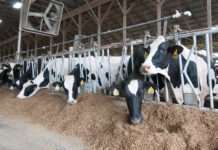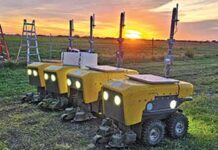Everest is especially popular in eastern two-thirds of state
MANHATTAN, Kan. – The results are in: The No. 1 wheat planted in Kansas for the fifth consecutive year is Everest, a variety developed by Kansas State University. A total of 9.6 percent of the state’s 2017 wheat crop was planted with Everest seed. The variety, T158 was the second most popular and Winterhawk was third.
The results were announced March 1 in a U.S. Department of Agriculture National Agricultural Statistics Service report.
Everest was the most popular variety in the eastern two-thirds of the state. It typically yields well and is more resistant to barley yellow dwarf and Fusarium head scab than some others, said Allan Fritz, the K-State wheat breeder who developed Everest. It also offers resistance to Hessian fly and leaf rust.
At 9.6 percent of the wheat seeded in Kansas, the variety has slipped from the 2016 tally of 12.2 percent and 2015 when 15.8 percent of the Kansas wheat crop was seeded with Everest.
Everest was first released in 2009, and to have so many years of successful use is almost unheard of, according to Gary Pierzynski, professor and department head of the Department of Agronomy at K-State. Wheat varieties don’t typically last that long because their resistance to disease breaks down and they have to be replaced continually.
“We wouldn’t expect Everest to remain the top variety for an extended period, but we’re confident what we’ve released recently will be tops in a couple years’ time,” Pierzynski said.
Everest was named for the northeast Kansas community in Brown County of the same name. The name was chosen as an indication the variety is well adapted to eastern Kansas and to recognize the John Bunck family for their contributions to the Kansas wheat industry and the K-State wheat breeding program.
K-State released two new varieties in 2016 – Larry and Zenda.
“Larry is broadly adapted with excellent yield potential and good resistance to stripe rust,” Fritz said, although it is susceptible to leaf rust. It is named after a longtime member of the K-State wheat breeding team, Larry Patton.
“Zenda, which is half Everest by pedigree, is intended as an Everest replacement as it has a similar level of resistance to Fusarium head scab with good stripe-rust resistance and moderate resistance to leaf rust,” Fritz said. While it is not as resistant to barley yellow dwarf as Everest, it is comparable to most other varieties for that trait.
Zenda, named for a town of that name in Kingman County, is a couple of days later to head than Everest.
More information about the K-State-developed varieties Larry and Zenda is available at the Kansas Wheat Alliance website at http://kswheatalliance.org/.
Story by:
Mary Lou Peter
and
Jason Hackett
K-State Research and Extension
For more information:
Allan Fritz – [email protected]
Gary Pierzynski – 785-532-6101 or [email protected]



